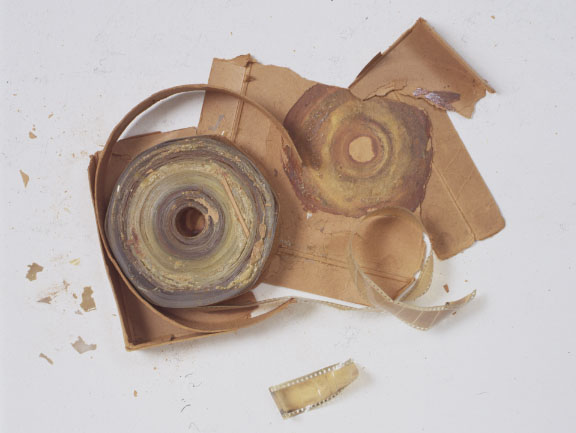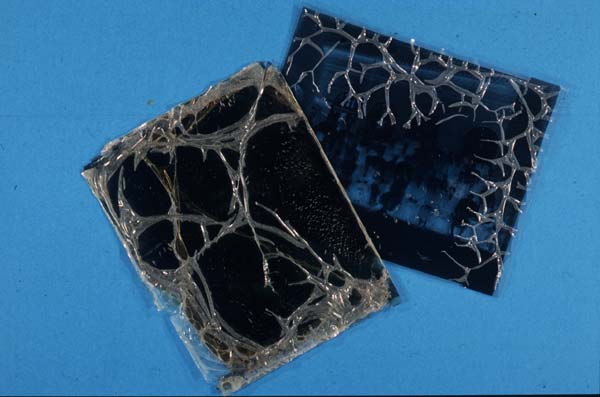|
By Morten Ryhl-Svendsen
Two types of negative and movie film materials poses great preservation problems: The first plastic used as a photographic base material was cellulose nitrate (CN), which was made from cotton linters nitrated with nitrate and sulphuric acid. Camphor was then added as plasticiser. Besides some very obvious problems (CN is an excellent expolsive) films on CN base will over time decompose and release NOx to the near environment. If these emitted pollutants are not ventilated away, they will return into the material and accelerate the decay rapidly. Often negatives and film reels are stored in airtight containers which makes ventilation almost impossible. A high storage temperature and relative humidity will speed up the deteriration further.
 Deteriorated nitrate movie film. The film has almost melted into one solid lump, ruining all informations on the film. Photo: Morten Ryhl-Svendsen © 1999
The second type plastic showed not to be much better. Cellulose acetate (CA) was introduced as "safety film" because it, as opposed to CN, wouldn't self-ignite. However, it has now shown that photographic materials on CA bases will decompose under a heavy release of acetic acid - also called "the vinegar syndrome". Again, if the pollutants are not removed from the film material the acid vapors will return into the material and auto-catalyse the decay. A typical sign of the vinegar syndrome is, besides the acetic smell, shrinkage of the film base.

Deteriorated acetate negatives. The bases are shrinking, causing the unchanged gelatine emulsion to lift of the base. |
| [ Page up ] | [ Home ] | [ Search ] | [ Webmaster ] |
IAQ in Museums and Archives, March 29th, 2000